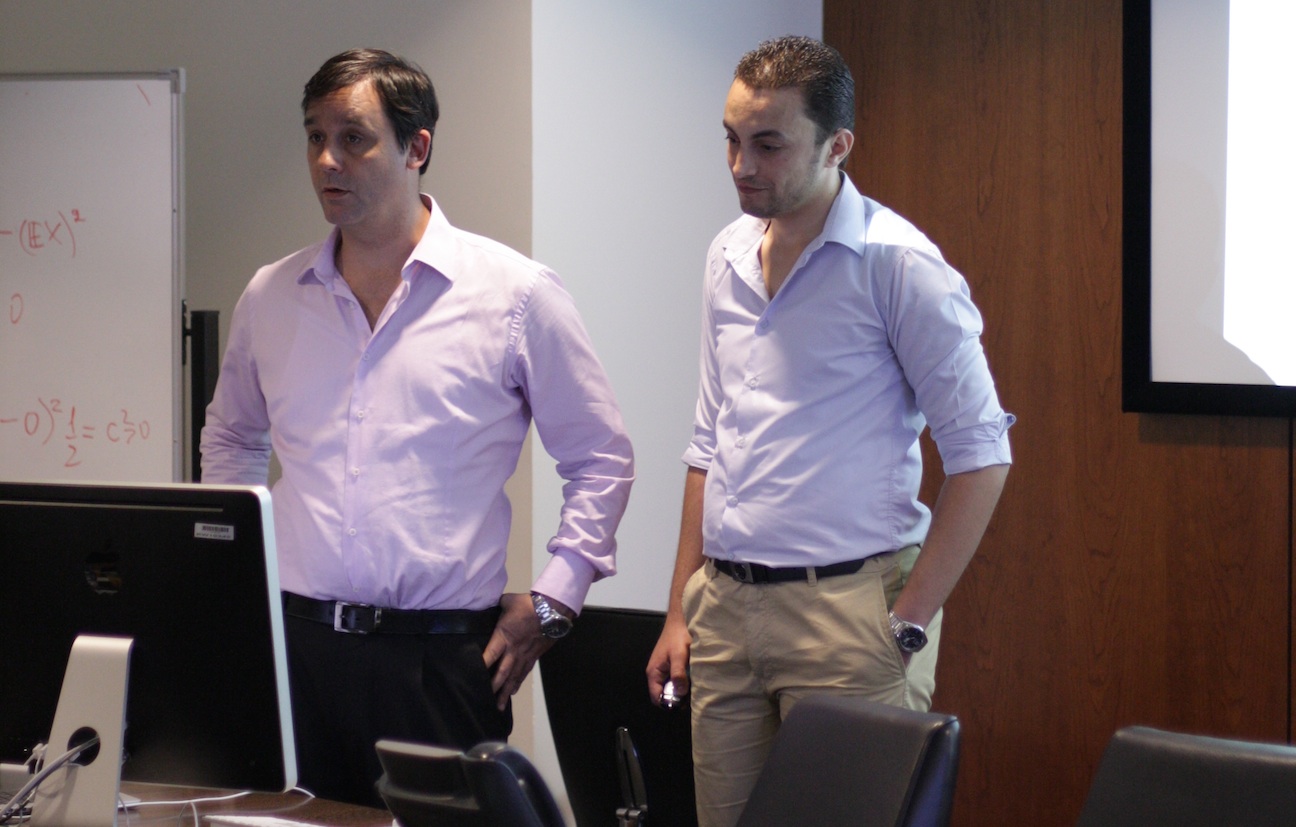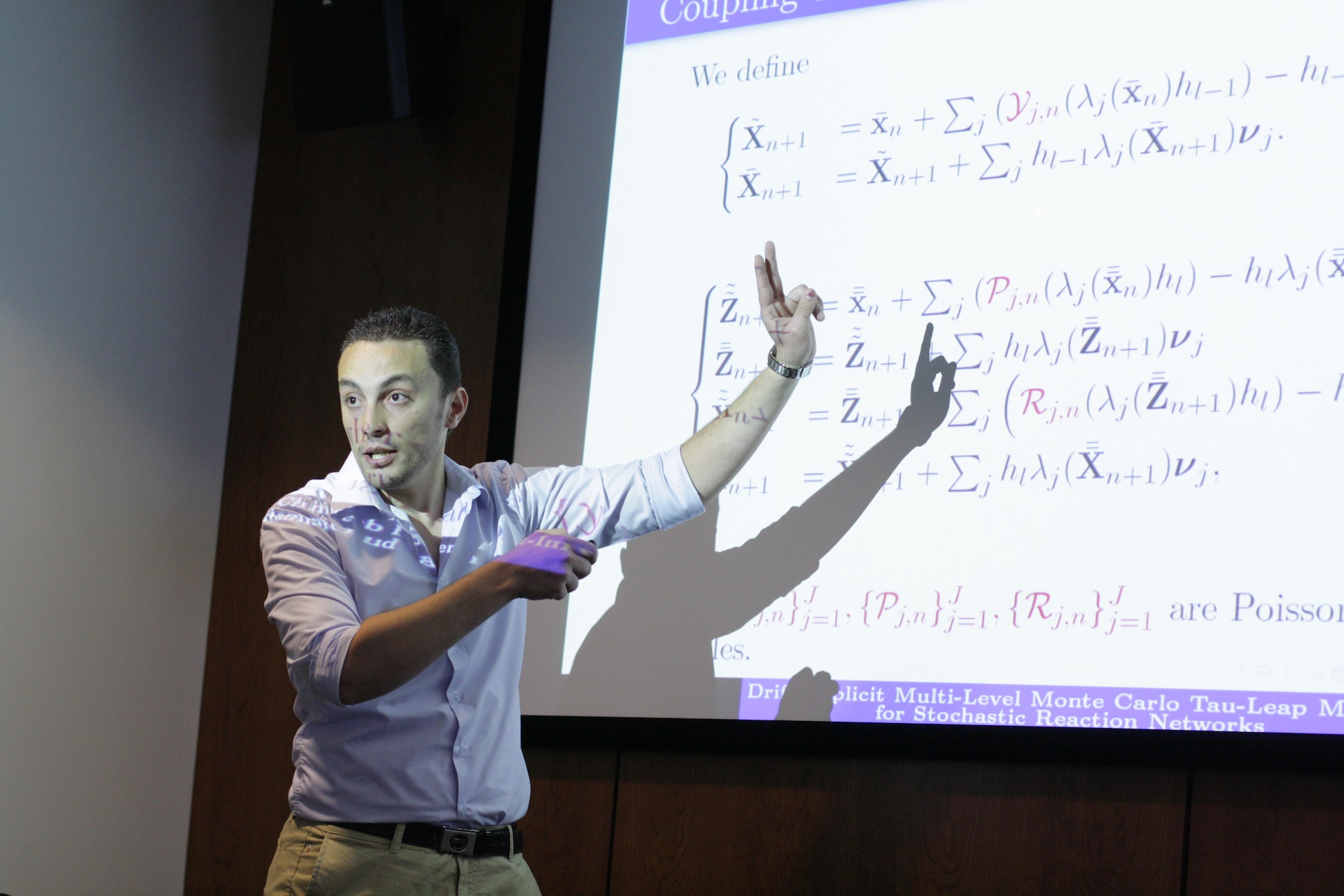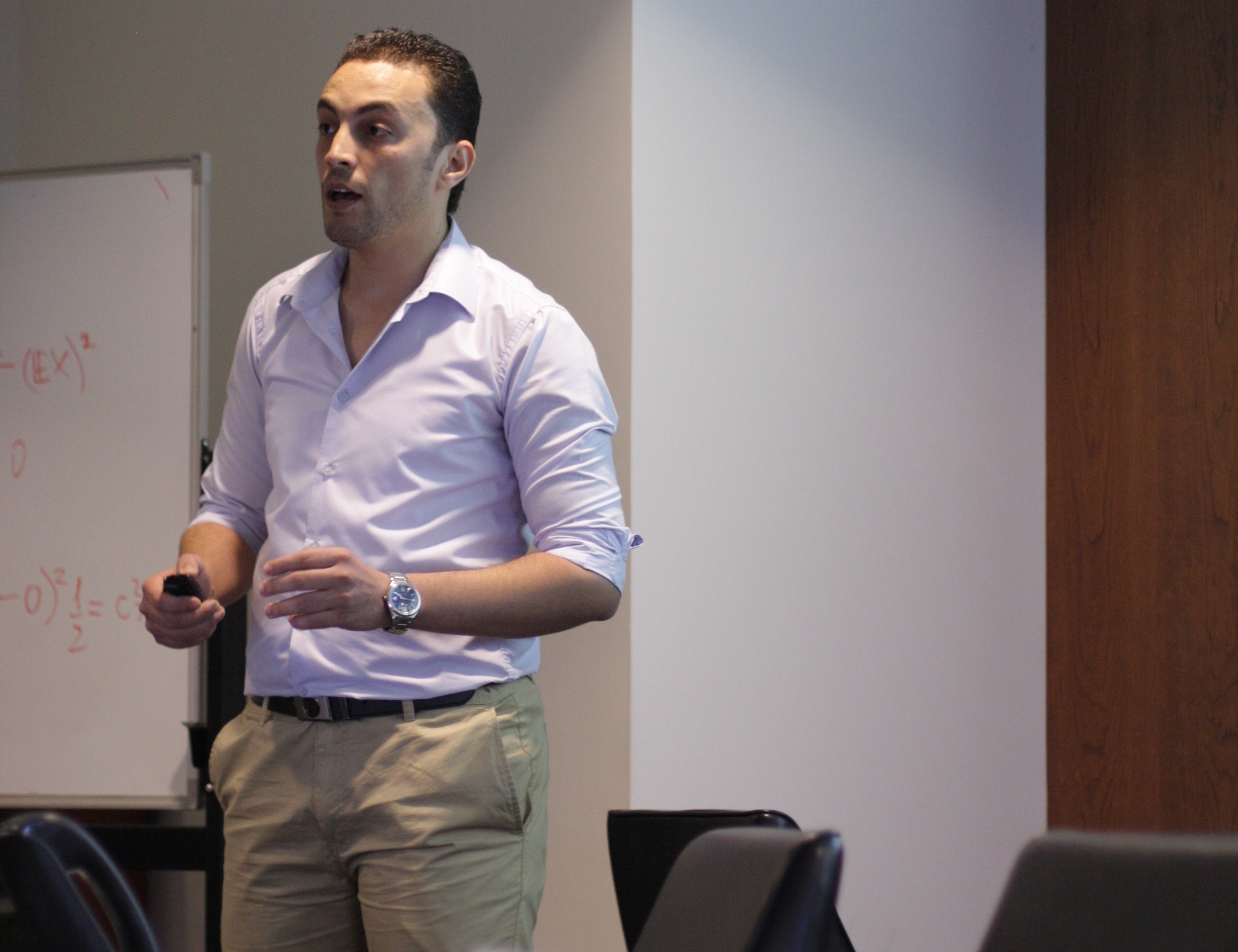On April 30th, 2015, Chiheb Ben Hammouda successfully defended his MS Thesis entitled "Drift-Implicit Multi-Level Monte Carlo Tau-Leap Methods for Stochastic Reaction Networks".
Supervisor: Prof. Raul Tempone
Co-supervisor: Dr. Alvaro Moraes
Committee Member: Prof. Omar Knio
Committee Member: Prof. Fabrizio Bisetti
Abstract
In biochemical systems, stochastic effects can be caused by the presence of small numbers of certain reactant molecules. In this setting, discrete state-space and stochastic simulation approaches were proved to be more relevant than continuous state-space and deterministic ones. These stochastic models constitute the theory of Stochastic reaction networks}(SRNs). Furthermore, in some cases, the dynamics of fast and slow time scales can be well separated and this is characterized by what is called stiffness. For such problems, the existing discrete space-state stochastic path simulation methods, such as the stochastic simulation algorithm (SSA) and the explicit tau-leap method, can be very slow. Therefore, implicit tau-leap approximations were developed to improve numerical stability and provide more efficient simulation algorithms for these systems. One of the interesting tasks for SRNs is to approximate the expected values of some observables of the process at a certain fixed time T. This is can be achieved using Monte Carlo (MC) techniques. However, in a recent work, Anderson and Higham in 2014, proposed a more computationally efficient method which combines the multi-level Monte Carlo (MLMC) technique with explicit tau-leap schemes.
In this MS thesis, we propose a new fast stochastic algorithm, particularly designed to address stiff systems, for approximating the expected values of some observables of SRNs. In fact, we take advantage of the idea of MLMC techniques and drift-implicit tau-leap approximation to construct a drift-implicit MLMC tau-leap estimator. In addition, to accurately estimate the expected values of a given observable of SRNs at a final time T, our proposed estimator ensures the numerical stability with a lower cost than the MLMC explicit tau-leap algorithm, for systems including simultaneously fast and slow species. The key contribution of our work is the coupling of two drift-implicit tau-leap paths, which is the basic brick for constructing our proposed drift-implicit MLMC tau-leap estimator. As an example of stiff problem, we used the decaying-dimerizing reaction as a test example to show the advantage of our drift-implicit method over the explicit one. Through our numerical experiments, we checked the convergence properties of our coupling algorithm and showed that our proposed estimator is outperforming the explicit MLMC estimator about three times in terms of computational work. We also illustrated in a second example of how our drift-implicit MLMC tau-leap estimator can be fifty times faster than the explicit MLMC.







